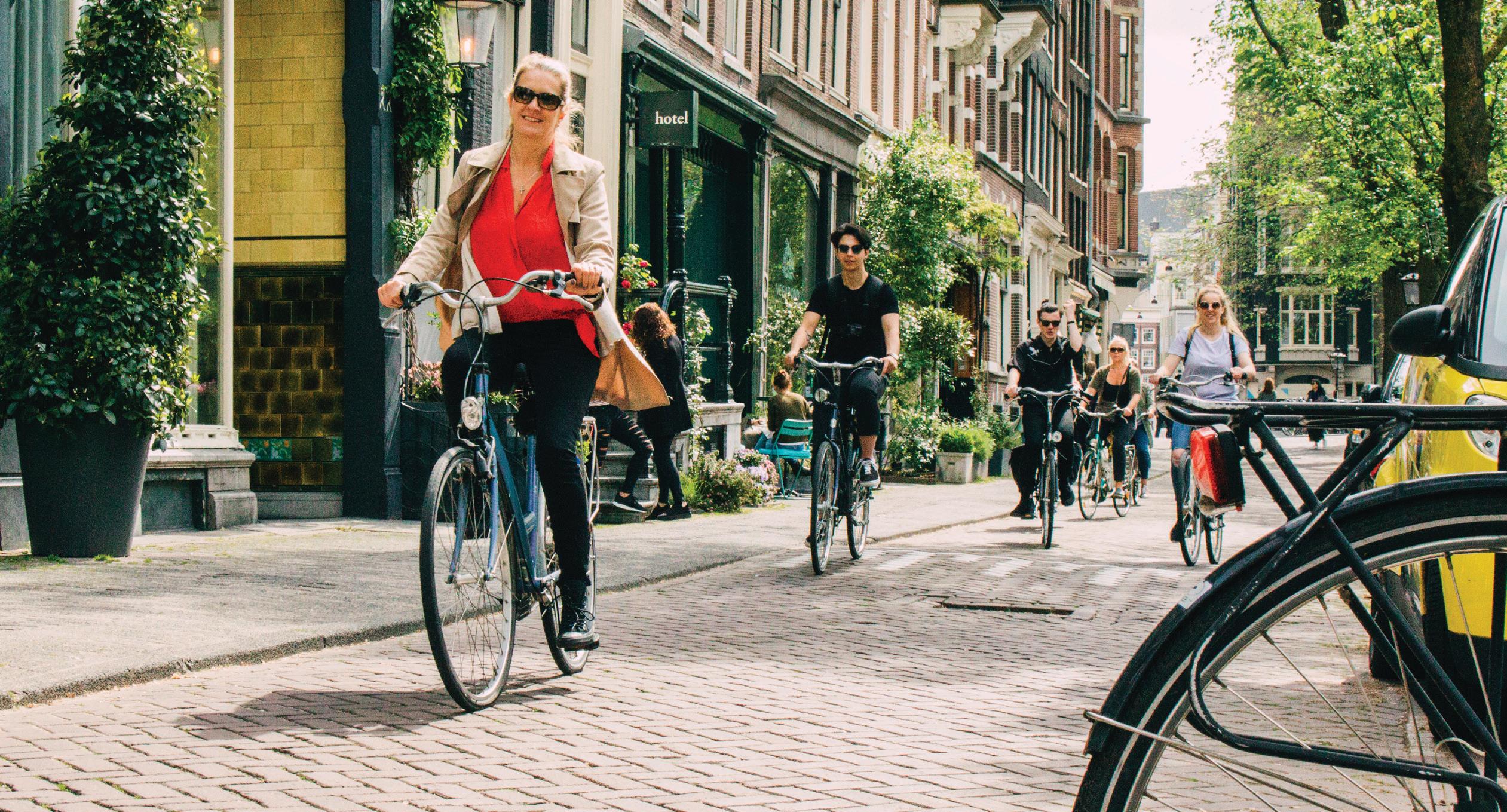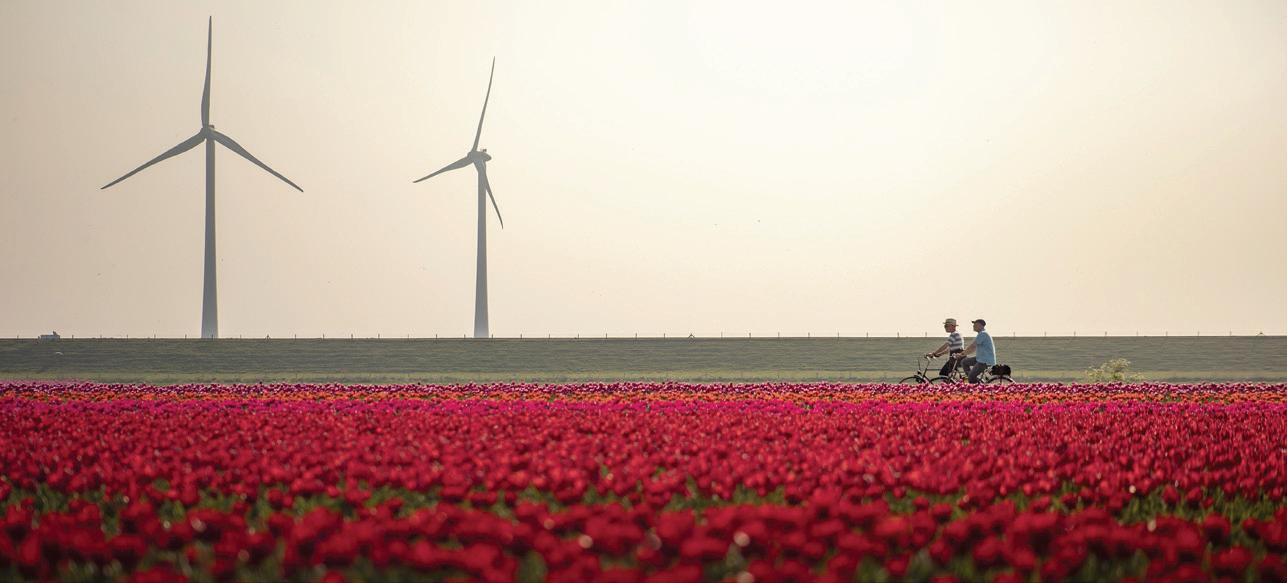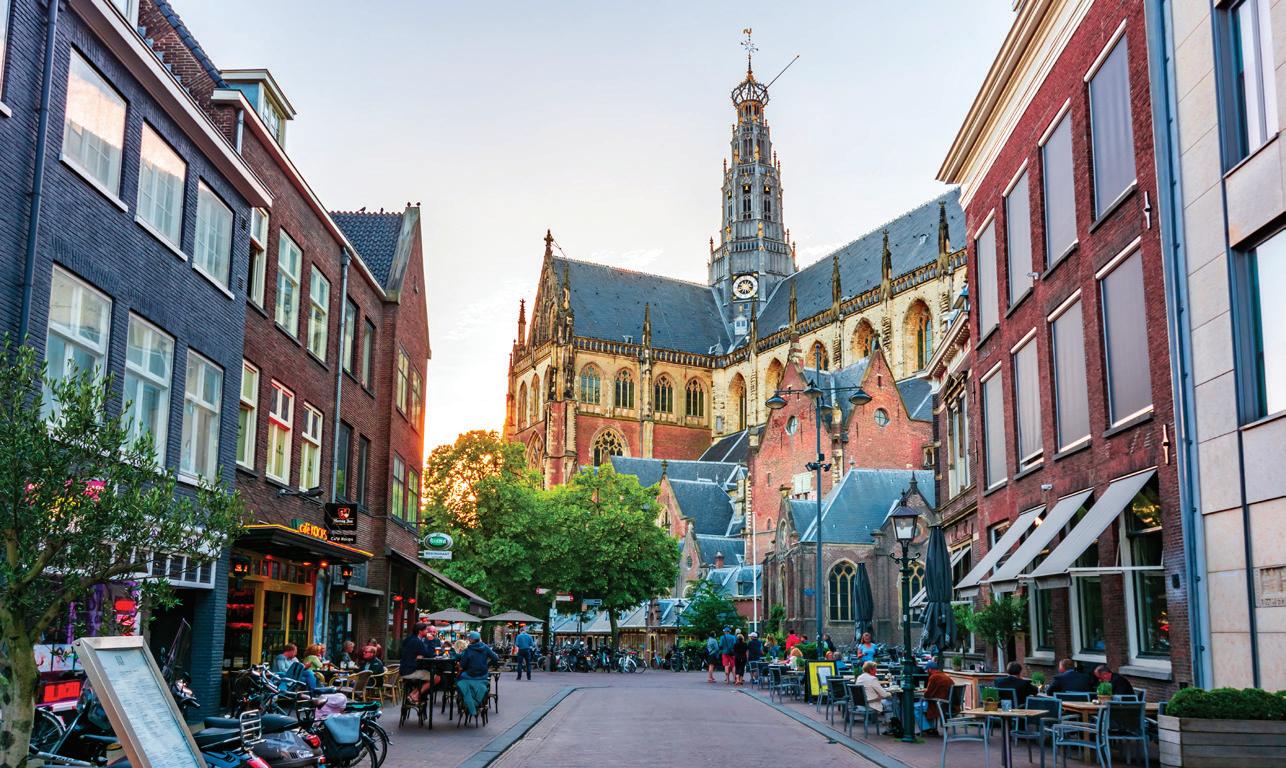
4 minute read
From Pedals to Petals
By Jane Mundy
A week-long journey to discover the best of the Netherlands on a bike
Europe has a vibrant and expanding bike culture, with everyone, from toddlers to baby boomers, feeling just as comfy on their bikes as North Americans do in their cars.
Early in 2020, experts predicted that the cycling trend would surge over Europe in the next decade, due largely to health and environmental concerns. Bike riding as a means of commuting is set to increase, mainly triggered by the growing popularity of e-bikes that have batteries to assist with your leg work.

Biking is part of daily life in the Netherlands
Biking has had its ups and downs in the Netherlands. Before the Second World War, people walked, biked or took public transit. Some cities destroyed from the war were designed around the automobile. People would happily live in the suburbs and commute by car to the city for work. In the 1950s and 1960s, they bought motor vehicles.
Then in the 1970s, the Dutch government began to invest in cycling infrastructure, prompted by the Middle East oil crisis when oil-producing countries stopped exports to the US and Western Europe. Urban planners designed a vast network of safe and inviting urban bike paths.

The Netherlands has become known as the bicycle capital of the world, boasting an estimated 20 million bicycles for its 17 million citizens. The country’s infrastructure is phenomenal. It has about 35,000 kilometres of cycling paths, enough to circle the equator almost six times. That doesn’t include another 55,000 kilometres of safe road space shared with traffic. Dutch motorists tend to look out for bikes since they are also likely to be cyclists.
More than half of visitors who come to the Netherlands will go on to sightsee and visit cities by bicycle. Bike rentals are readily available and affordable. Even Schiphol, the country’s main airport, has rentals nearby. The Dutch government is going further. It’s stepping up its efforts with Tour de Force, an initiative that aims to add 20 per cent more kilometres of bike routes by 2027.

Bucolic views are plentiful when biking in the Netherlands ©NBTC/Claire Droppert
The Dutch categorize cyclists into two groups – wielrenner, literally “a wheel runner” or sporty cyclist and fietser, a general term that translates to “someone on a bike.” I was definitely part of the latter, as was the rest of my group who were gathered in Amsterdam to begin exploring the Netherlands by bike.
We adjusted our helmets, gripped the handlebars and leisurely pedalled away from the river barge where we’d be staying over the next week. Our first destination was the historic cathedral city of Utrecht. We rode past tulip fields ablaze with brilliant colours, cows drinking from the canal and a heron gulping down a tiny frog in a marsh.
Each night, our group of 10 riders rendezvoused with the barge that had moved to the next destination on our route while we cycled. Having the boat as a home base was ideal because we only had to unpack once for our journey. Onboard after dinner, our guide, Piet, spread out a huge map and discussed the next day’s itinerary.

A few of Amsterdam’s 2,500 houseboats at dusk
From Delft, we headed for The Hague, through parks and Bosch Palace, and rode past sand dunes. We even tacked a few hills that proved to be a workout before we dipped our feet in the North Sea. Following the Old Rhine River, we pedalled by thatched-roof windmills and fairy-tale cottages with backyard goats and chickens on the way to Leiden, Rembrandt’s birthplace and one of the world’s largest flower gardens. We zipped along narrow streets and courtyards dating back to the 17th century. Go early to the Keukenhof, aka the “Garden of Europe,” to see the colourful show created by the more than seven million bulbs planted annually.
Mid-April to mid-May is the peak season. By noon, the tulip capital is jam-packed with tour buses. Leave plenty of time to stroll its 37 hectares, including the jaw-dropping indoor pavilions full of blooms, and the city itself. The street market of Leiden guarantees you’ll fill the backpack with Dutch specialties, like stroopwafels (syrup waffles).

Multi-coloured tulips, daffodils and grape hyacinths in the Keukenhof Garden
The next day, we biked from Leiden to Haarlem and stopped at hofjes and almshouses (a type of housing built around a common courtyard), built in the 17th century. We always had time to dawdle in cafés and pubs and often stopped to smell the roses and the cheeses.
Only in the Netherlands could I cycle up to 50 kilometres in three consecutive days. It was exhilarating and I was glad I packed a pair of padded bike shorts. (You can buy padded seat covers in Amsterdam.) Fortunately, there were no Lance Armstrongs in our group, so we kept a leisurely pace. In fact, one gentleman recently had a hip replacement, and another hadn’t been in the saddle for decades. But if you’re saddle-sore or just feel like taking a day off from riding during your trip, that’s easy to do. One gal decided she wanted to walk around Haarlem’s art galleries, shops and brew pubs. She took a train to Amsterdam and met us back at the barge for dinner, just in time to lift our glasses and say proost to our seven days of cycling. We were proud to celebrate being fietsers.










